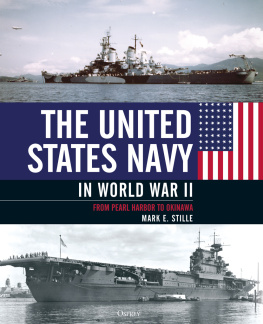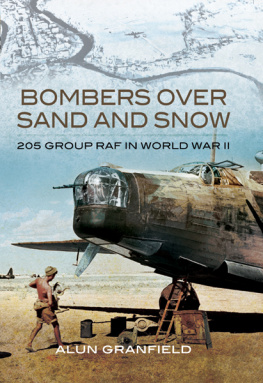This edition is published by PICKLE PARTNERS PUBLISHINGwww.picklepartnerspublishing.com
To join our mailing list for new titles or for issues with our books picklepublishing@gmail.com
Or on Facebook
Text originally published in 1992 under the same title.
Pickle Partners Publishing 2015, all rights reserved. No part of this publication may be reproduced, stored in a retrieval system or transmitted by any means, electrical, mechanical or otherwise without the written permission of the copyright holder.
Publishers Note
Although in most cases we have retained the Authors original spelling and grammar to authentically reproduce the work of the Author and the original intent of such material, some additional notes and clarifications have been added for the modern readers benefit.
We have also made every effort to include all maps and illustrations of the original edition the limitations of formatting do not allow of including larger maps, we will upload as many of these maps as possible.
THE DEVELOPMENT OF AMPHIBIOUS TACTICS IN THE U.S. NAVY
by
General Holland M. Smith
U.S. Marine Corps (Retired)
with Preface by
Brigadier General Edwin H. Simmons
U.S. Marine Corps (Retired)
PREFACE
In February 1946, on my return from the Pacific, I became, as a 24-year captain, managing editor of the Marine Corps Gazette . All the officers really qualified as editors were Reserves and they were taking their post-war discharges just as rapidly as they could get them. One of my first editorial tasks was the preparation for publication of an imposing manuscript entitled The Development of Amphibious Tactics in the U.S. Navy putatively written by Lieutenant General Holland M. Smith.
The amanuensis was his junior aide, First Lieutenant William H. Lowe, Jr., a product of Harvard. By the time we were ready to begin publication Bill Lowe had been released from active duty and had gone to work for World Report , predecessor to U.S. News and World Report , and the manuscript was not yet complete. Lowe promised to finish it.
Part of my task of readying the manuscript for publication was to write a biographical profile of General Smith. That profile appears on page 1 of this reprint. Working with the manuscript and writing the biographical sketch caused me to wonder where the man, Holland M. Smith, ended and the persona, Howlin Mad Smith, possibly created by his staff and the media, began. Frankly, now, 45 years later, I am still not certain.
The first installment of The Development of Amphibious Tactics in the U.S. Navy appeared in the June 1946 Gazette. The series, so far as it goes, is a very thorough piece of work. It is particularly strong in its coverage of the theoretical developments and landing exercises conducted between the two World Wars. It is also good in that it covers both the Pacific and European theaters and includes all significant Army landings as well as Marine. The approach is analytical and the series is still well worth reading and study.
With the October issue and the fifth installment, the by-line changed from Lieutenant General Holland M. Smith to General Holland M. Smith (Retd). The series ends abruptly with the March 1947 issue of the Gazette . That last installment deals with Salerno and the last line is To be continued.
But it never was. Bill Lowe went to London and Paris as bureau chief for U.S. News and World Report.
General Smith himself had retired in April 1946 with an honorary promotion to four-star general. He had no staff upon whom to depend for the completion of the series. He turned instead to the Australian journalist, Percy Finch, and the writing of his autobiography, Coral and Brass .
Finch must bear much of the blame for sensationalizing the autobiography. It is a quarrelsome, bitter book that must be considered against the background of the rampant post-war interservice rivalries which culminated in the enactment of the National Security Act of 1947. Smith was concerned not only over the future of the Marine Corps but also his own place in history.
Saturday Evening Post , then a tremendously influential publication, published much of Coral and Brass as a series of articles under such titles as Tarawa Was a Mistake, My Troubles With the Army on Saipan, and Iwo Jima Cost Too Much. The book was an embarrassment to the Marine Corps and it did not serve Holland Smith well. He could have better spent his time tending his roses in La Jolla.
Quite possibly General Smith later regretted the books publication because he made no further public comment on the conduct of the war.
Through the years I have found reason to return to Amphibious Tactics in the yellowed pages of my bound volumes of the Gazette , but I read it again, most thoroughly, in the summer of 1989 when I was getting together some dedicatory remarks for the induction of General Smith into Alabamas Military Hall of Honor, a long overdue accolade.
The warrior ethic is strong in Alabama and it is also a state wherein the populace is unabashedly patriotic. The Military Hall of Honor is at the Marion Military Institute, one of the oldest military academies in the country, but Marion is not close to anything, so the induction ceremonies were held in Birmingham.
It was a black-tie affair, held the night of 25 August 1989 at The Club up on Red Mountain overlooking the city. The Club is a glittering kind of place more suited, I would think, to Palm Springs or Las Vegas than to Birmingham.
About 175 to 200 persons were present, including about twenty flag officers, most of them Army generals: active and retired; regular, National Guard, or Reserve. I was given to understand that there were still residual sensitivities over the Smith vs. Smith controversy at Saipan and that these feelings had possibly delayed Howlin Mad Smiths juried acceptance into the Hall of Honor.
The Smiths were an old Georgian family who had come to Alabama after the Civil War. Holland McTyeire Smith was born 20 April 1882 in Russell County in the heart of the cotton belt. His father was a young school teacher who had read the law and had been admitted to the bar a year before Hollands birth. Hollands mother was of staunchly Methodist Scotch-Irish extraction, hence his middle name, McTyeire. When he was three the family moved into Seale, the county seat, which then had something less than 300 persons. His elementary education was in Seales one-room one-teacher schoolhouse.
Hollands father, John V. Smith, acquired the reputation of being one of the best criminal lawyers in the state. Father and son were not particularly close, but it was taken for granted that Holland would follow his father into law. In 1898 he entered Alabama Poly-technical Institute which later became Auburn University. Polytech was run as a military school. Holland did not like the uniforms or the drill and he barely managed to graduate. History was his favorite subject and Napoleon was his favorite general. He graduated in 1901 and at his fathers insistence enrolled in a two-year law course at the University of Alabama in Tuscaloosa. He was a good short-distance runner and in his senior year at the University was captain of the track team. He graduated in 1903 and returned to Seale to work in his fathers law office. He did not do well.










